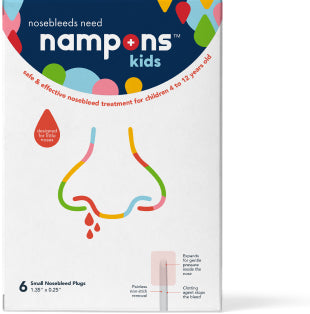Nosebleeds occur when the blood vessels in the nose become damaged. They are rarely serious and will typically clear up in just a few minutes. But if the bleeding continues, a little ice could help you.
How Can You Stop a Nosebleed?
The most important thing to do when you have a nosebleed is to remain calm. It's normal to panic, especially if you haven't had many nosebleeds in the past or there is a lot of blood, but that will only make the bleeding worse.
Sit up straight and lean forward. You don't need to put your head between your legs, a slight incline is enough. The important thing is that you're not lying down or twisting yourself into positions that will restrict you or increase your blood pressure.
Before you sit and lean forward, you may want to grab a bowl or some tissue, or lean over the sink or toilet, just to give the blood somewhere to drain.
Apply gentle pressure just below the bridge of your nose using your index finger and thumb. A light pinch is enough and will help to promote blood clotting.
Maintain pressure for 5 to 10 minutes and breathe through your mouth. It is important to remain patient throughout this time—don’t release the pressure just to see if your nose is still bleeding.
If the bleeding doesn't stop after following these steps, you can repeat. It might be that you didn't pinch firmly enough or on the right part of your nose (below the bony part, where the nose is soft). It might be that you stopped to check, or just didn't give it enough time.
If the bleeding remains heavy after following these steps and no blood clots have formed after 15 to 20 minutes, it's time to get some medical advice or visit an urgent care center.
Nampons can help in this situation, as they promote clots and gently stop the bleeding. They'll do more than cotton pads and nose pinching and are good to have around if you suffer from frequent nosebleeds.
Without Nampons, and assuming the bleeding isn't heavy and doesn't require immediate medical care, you can try an ice pack.
Using Ice to Constrict Blood Vessels
Placing an ice pack over the bridge of your nose may help to constrict the blood vessels and stop or slow the bleeding. If there was any trauma, it may also reduce swelling.
Make sure you wrap the ice pack in a towel first, as it shouldn't be in direct contact with the skin.
Following the steps above should be enough to promote clotting, constrict the blood vessels, and fix your bloody nose! If the problem persists, it is time to visit the emergency room!
If you're experiencing nosebleeds on a regular basis, you should also inform your doctor. Even if the bleeds don't last very long and it doesn't take much to stop the bleeding, it's important to keep your doctor in the loop. They can provide you with some helpful medical advice and will also run some tests and checks to make sure there are no blood clotting issues.
It's also good to have that information on your medical record, just in case you're ever prescribed blood thinning medications or have any health conditions that can make the problem worse.



